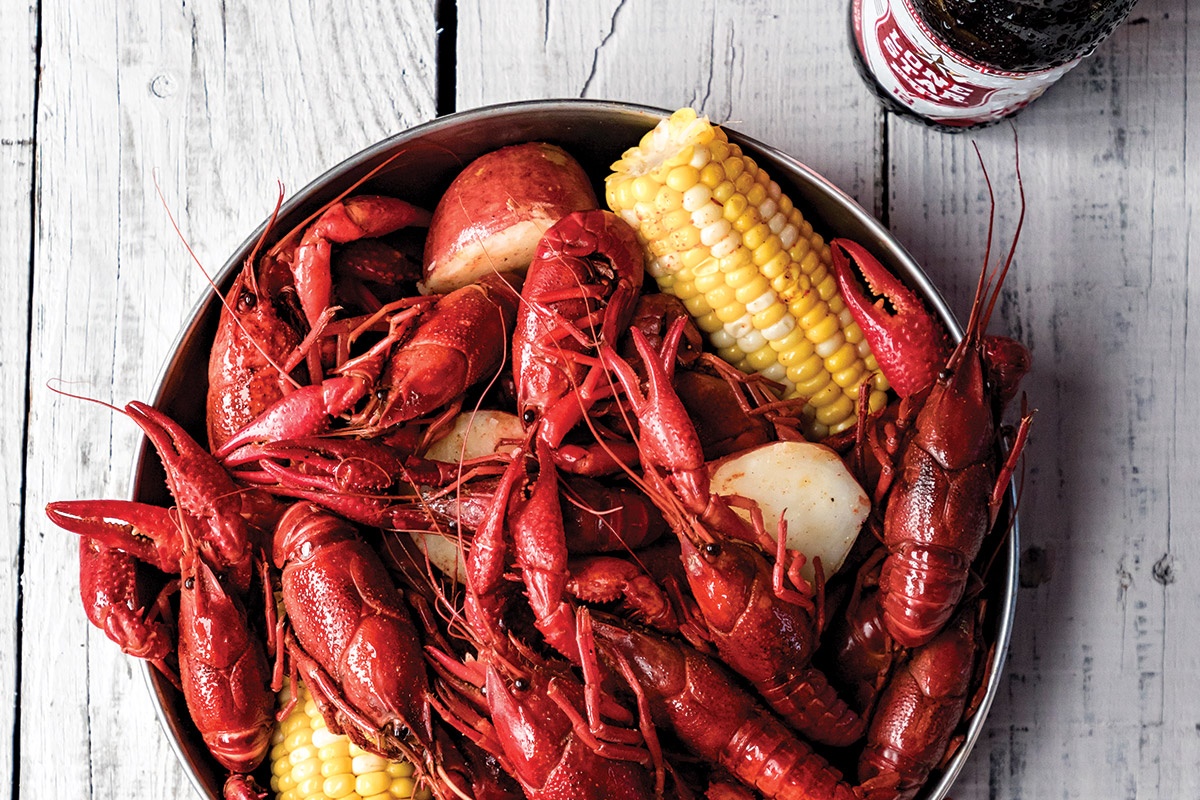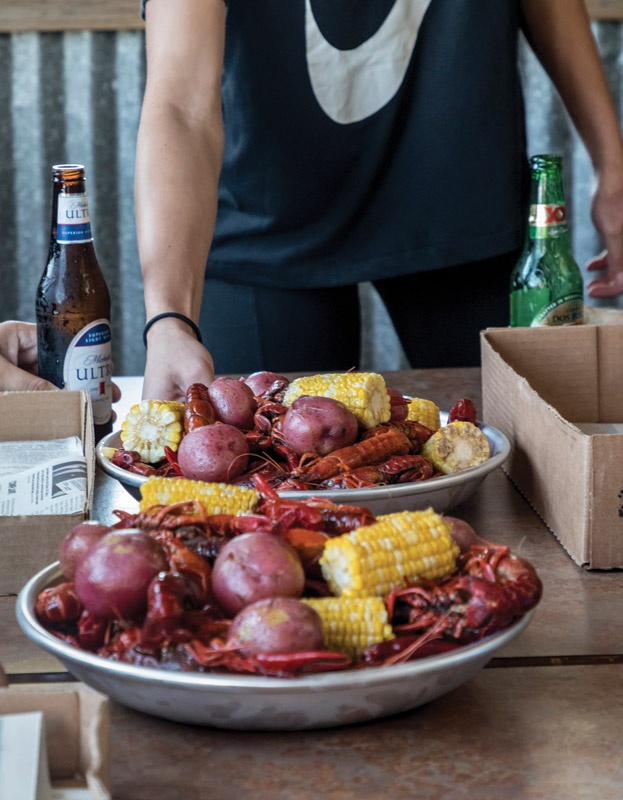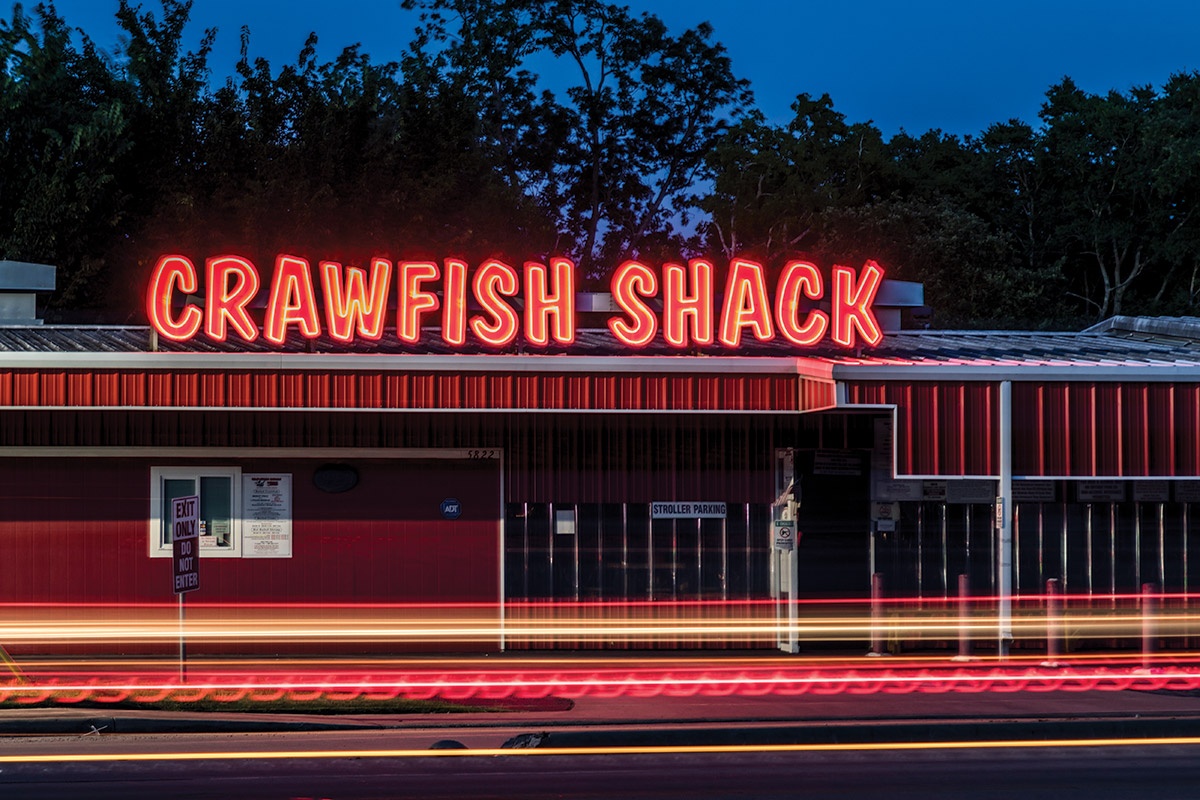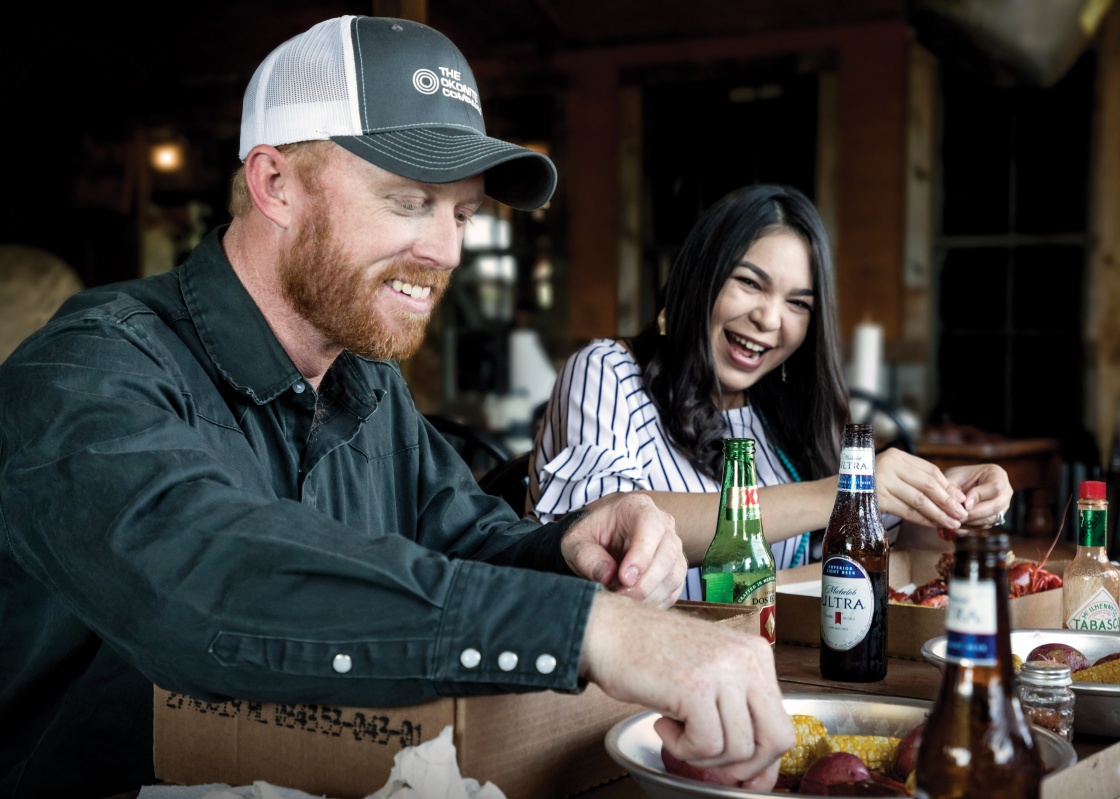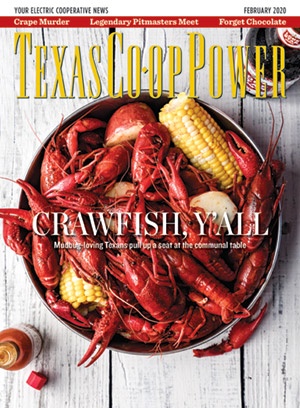Crawfish. Crawdads. Mudbugs.
Whatever you call them, they swim at the heart of a Southern tradition that’s as much about eating the tasty freshwater crustaceans in a messy jubilee of divine spiciness as it is about bringing friends, family—and even strangers—together.
From out-of-the-way eateries and exuberant festivals to backyard shindigs and community celebrations, mudbug-loving Texans happily pull up a seat at a communal table and peel tails. Steam and aromatic spices fill the air as piping hot, bright-red crawfish tumble from giant pots onto paper-covered tables.

Crawfish and good times at Repka’s in Brookshire.
Eric W. Pohl
Then it’s on! Time to twist off the tails and pull out the sweet, tender lobsterlike tail meat. The more adventurous devourers, keeping with time-honored crawfish tradition, suck the rich, flavorful yellow “fat” (it’s actually a digestive organ called the hepatopancreas) from the head. Aficionados insist this is the best part.
Crawfish season varies depending on whom you ask, but it is usually in full swing by the start of Lent in late February, with the peak for size and quality covering March, April and May. Seasonal specialty restaurants like the Crawfish Shack in Crosby attract crawfish-crazed patrons by the dozens.
“The first day we open up for the year, we’ll have 60 cars in line just to get to-go food,” says owner Dan Meaux. “Some people are waiting two hours.” The Crawfish Shack has erupted in popularity in the past few years, making it one of the top crawfish spots in the country.
“As of the last two years, we cook more crawfish than anyone in the country,” Meaux says. He credits the explosive growth to the backyard party atmosphere and never compromising on quality.
Mudbug-themed festivals feature live music, parades, pageants, carnival rides and literal tons of crawfish. In 2017, Guinness World Records recognized the Bigass Crawfish Bash in La Marque for the most crawfish prepared in eight hours: more than 58,000 pounds.
Across Texas, every crawfish chef and backyard boiler has a recipe. Most popular is the Cajun style, which calls for infusing boiled crawfish with peppery spices and serving them with boiled corn and potatoes. Another popular offshoot is the Vietnamese-Cajun style, in which the boiled crustaceans are sautéed with butter, garlic and aromatic ingredients such as lemongrass and citrus.
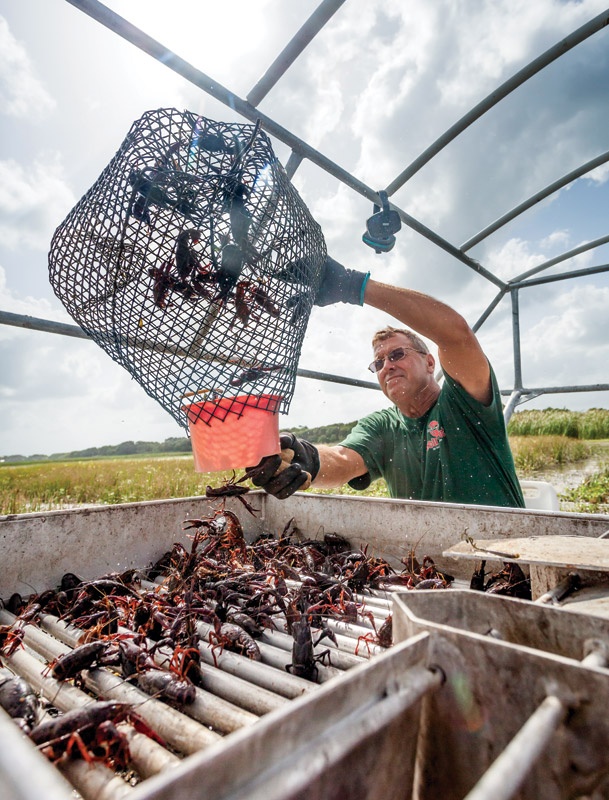
Craig Radley of Pinchers Crawfish Farm empties a crawfish trap into a boat’s sorting area.
Eric W. Pohl
Getting the mudbugs
The first chapters of crawfish scripture were written in Louisiana’s Atchafalaya Basin, where wild harvests began in the 1880s. By the 1950s, cold storage and the introduction of wire crawfish traps boosted harvest volume. Crawfish farmers found they could raise an excellent crop in flooded rice fields and produce consistently larger crops year over year.
That farming tradition continues with folks like Craig Radley, who converted 50 acres of rice fields near El Campo, in Wharton County Electric Cooperative’s service area, into a swampy crawfish heaven. Radley calls his operation Pinchers Crawfish Farm, and on one sunny afternoon, he readied his flat-bottomed aluminum boat for harvesting mudbugs. He navigated the specially designed craft through the muddy water with help from a hydraulic, cleat-studded wheel that pushed along the slushy bottom.
Radley hoisted each pyramid-shaped, crawfish-filled trap from the water and emptied the catch into a sorting area in front of his cockpit. As he went, he rebaited each trap with commercial crawfish pellets and put it back into the water to capture more.
As he sorted and cleaned his harvest, Radley removed debris and tossed the smaller mudbugs back so they could grow larger. With a full load, he motored back to his nearby seafood restaurant, Pinchers Boil’n Pot. The crawfish are submerged in fresh water for 24 hours to purge them of internal impurities. After that, they get weighed and are ready for their starring role in the restaurant.
